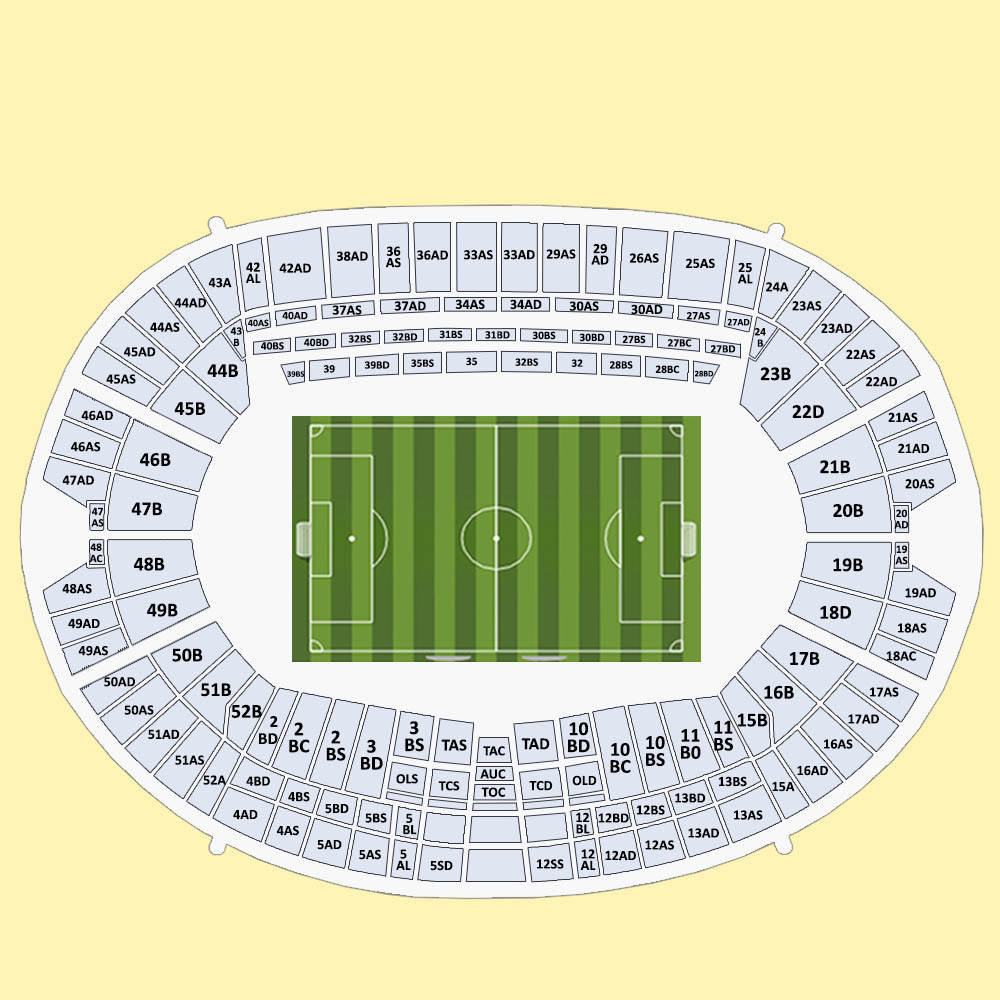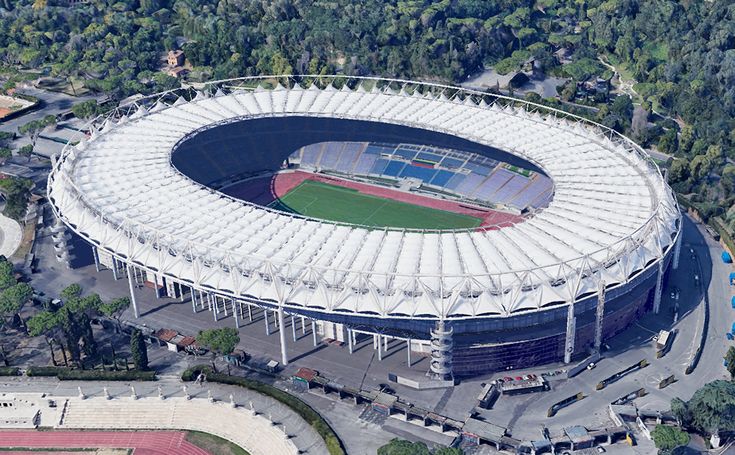The Stadio Olimpico (English: Olympic Stadium) is the largest sports facility in Rome, Italy, with a capacity for more than 70,000 spectators. It is located inside the Foro Itálico sports complex, north of the city. The structure is owned by the Italian National Olympic Committee and is mainly used for association football. The Stadio Olimpico is the home ground of the Serie A Club Roma and Lazio football clubs and also hosts the Coppa Italia final. It was rebuilt for the 1990 FIFA World Cup and hosted the final of the tournament.
Despite being an Olympic stadium, therefore ostensibly dedicated exclusively to sport, musical concerts are also held, among which Claudio Baglioni’s concert on June 6, 1998, stands out, which still holds the Olimpico attendance record with a total of more than 100,000 spectators, thanks to the fact that the stage was located in the center of the stadium and the public surrounded it, occupying all the seats.
Rated as a UEFA category four stadium, it has also hosted four European Cup/Champions League finals, the most recent being the 2009 UEFA Champions League final. Outside of football, the stadium is used by the Italian rugby union team and is the national athletics stadium of Italy. Occasionally, it hosts concerts and events.
| Built In: | 1927 |
| Capacity: | 70,634 |
| Home Teams: | Lazio |
Olimpico Stadium History
1937, the Stadio dei Cipressi
In its early stages, the Stadio Olimpico was called the Stadio dei Cipressi. It was designed and built within the larger Mussolini Forum (Foro Mussolini) project, which was renamed Foro Italico after the war.
The construction works began in 1927 led by the Turin engineer Angelo Frisa and the architect Enrico Del Debbio. Construction was completed in 1932, after some variations to the original plan. For example, the construction of masonry stands was not part of the initial plan as the stands originally consisted of grassed terraces.
In 1937 the construction of a second level of stairs began, but it was interrupted in 1940 due to the outbreak of World War II.
1953, the Stadio dei Centomila
In December 1950, the work site for the completion of the stadium was reopened. The project was entrusted to the engineer Carlo Roccatelli, a member of the Superior Council of Public Works. At first, the plan was for a stadium with a more complex structure than was actually realized. However, the scarcity of funds and the environmental characteristics of the area led to a less ambitious building. On Roccatelli’s death in 1951, the management of the work passed into the hands of the architect Annibale Vitellozzi. The stadium now reached a capacity of around 100,000, so the stadium was known as Stadio dei Centomila until it was renamed for the 1960 Olympics. The building was inaugurated on May 17, 1953, with a soccer match between Italy and Hungary. Hungary won the game, 3-0.
1960, the Stadio Olimpico
During the 1960 Summer Olympics, the stadium hosted the opening and closing ceremonies and athletics competitions. Ground-level seating was removed resulting in an actual spectator capacity of 65,000. Subsequently, the stadium hosted several editions of the Italian Athletics Championships, the 1975 Summer Universiade (the stadium was the only venue for the Universiade), and the 1987 World Championships in Athletics. It still hosts the annual Golden Gala meeting.
1990 restructuring and roofing of the stadium
For the 1990 FIFA World Cup, for which it was the main stadium, the facility underwent an extensive renovation. While that work was underway in 1989, the capital teams Lazio and Roma had to play their Serie A matches at the Stadio Flaminio. The work was entrusted to a team of designers that included the original architect Annibale Vitellozzi. From 1987 to 1990, the construction plan was modified several times, with the consequent increase in costs. Finally, the Olimpico was completely demolished and rebuilt in reinforced concrete, with the exception of the Tevere Grandstand, which was expanded with the addition of more steps and curves that approached nine meters to the pitch. All the sectors of the stadium were equipped with a total coverage in a white tensile structure. Blue plastic backless seats were installed and two giant screens built in 1987 for the World Athletics Championships were also mounted inside the curve. In the end, the new version of the Olimpico had 82,911 seats. It was the 14th stadium in the world by a number of seats among soccer stadiums, the 29th among all stadiums, and the second in Italy, only behind the San Siro Stadium in Milan.
The Stadio Olimpico hosted five matches involving the Italian team and the final between West Germany and Argentina. West Germany won the final match 1-0.
With the same 1990 design, the Stadio Olimpico hosted the UEFA Champions League final between Juventus and Ajax on May 22, 1996, in which the Bianconeri won the penalty shootout.
2008 restyling of the stadium
In 2007, an extensive redevelopment plan for the internal design of the stadium was drawn up, to meet UEFA standards for the 2009 UEFA Champions League Final which was held in Rome. The work was executed and finished in 2008. It included the establishment of standard structures with improvements in security and the arrangement of dressing rooms and the press room. It also included the replacement of all seats the installation of high-definition LED screens, the partial removal of the Plexiglas fences between spectators and the field, and a reduction of seats to the current capacity of 70,634. To improve audience comfort, part of the stadium’s modernization involved increasing the number of restrooms and fixing the toilets. As a result of these improvements, the Stadio Olimpico was classified as a UEFA Elite stadium.
Stadium Capacity
Olimpico Stadium has a seating capacity of 70,634.
Olimpico Stadium Seating Plan

Notable Events & Records
Not Yet.
Upcoming Events
Not Yet.
Parking
Not Yet.

